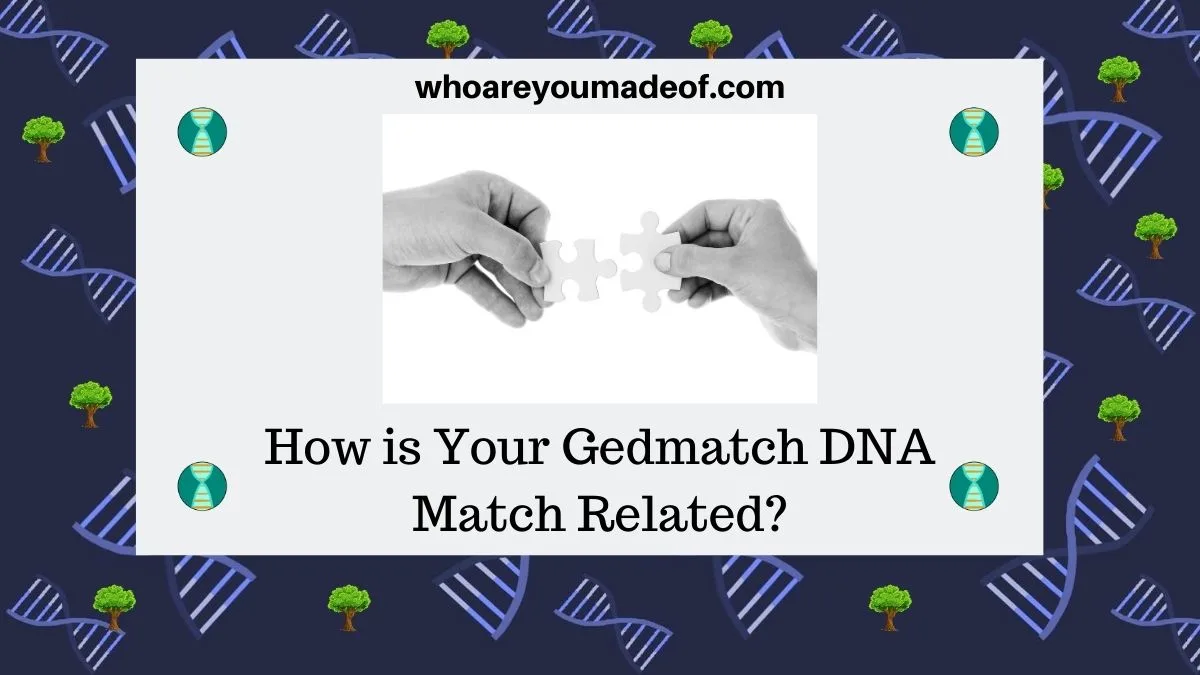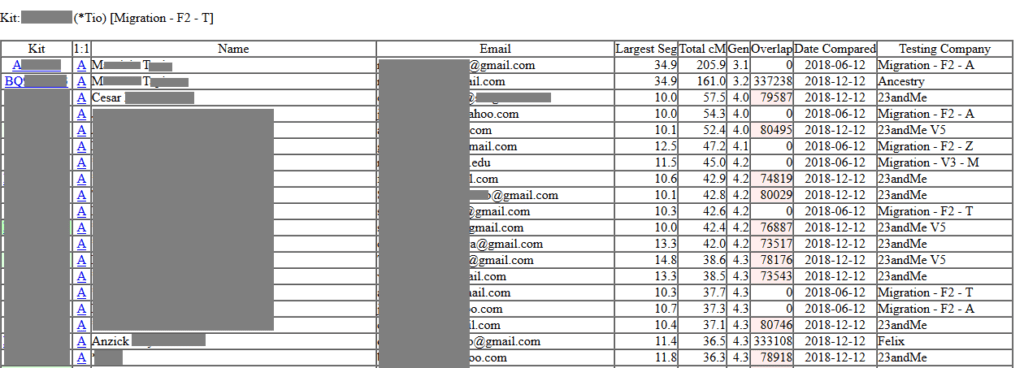Have you tried out Gedmatch? One of the most popular tools on the site is the One-to-Many Comparison where you receive a long list of DNA matches. Who are these people and what is your connection to them?
In this post, I'll give you some different strategies to help you determine how you and your Gedmatch DNA matches are related.

A benefit of Gedmatch is that we are able to compare our DNA with people who tested on other DNA sites and also uploaded their DNA info to Gedmatch. The ability to do this is amazing, but what good is it if we can't work out our relationship to our matches?
Below, I'll walk you through some simple steps you can take to help you work out exactly who your DNA matches are and how you might be connected. Some will seem more obvious than others, so bear with me.
Note: The ideas that I mention in this post are only to help you research your DNA matches for genealogical purposes - primarily for you to work out your most recent common ancestor. I don't condone violating anyone's privacy, so make sure you don't share any information that you learn in a manner that would put your relative's privacy at risk.
How much DNA do you share with your Gedmatch match?
Before you start trying to determine who your match is and how they are related to you, you might want to take a quick look at how much DNA you share.
You can find information about your shared DNA in two columns called "Largest Seg" and "Total cM". The number in the Total cM column tells you the total number of centimorgans that you share with your match. The Largest Seg column lets you know the length of the longest segment.

The longer the largest segment, the closer the relationship. Generally speaking, the more total cMs shared, the close the relationship. Take a look at my post called Beginner's Guide to Shared Centimorgans in order to learn how you can use this information to estimate how closely (or how distantly) you might be related to your match.
Once you have an idea as to a basic relationship distance between you and your match, you will be able to make better use of other information that you learn about your match.
Did your Gedmatch match do their initial DNA test on the same site that you did?
On your Gedmatch One-to-Many results, you will notice that in the last column you can see which company your DNA match did their test with. If they uploaded their DNA directly to Gedmatch, they would have been asked to specify which company did their original test. If their data was migrated from the classic Gedmatch site, it will say "Migration" and provide a letter, which can help you figure out which testing company they used.
If you tested with the same company that they did, or you have uploaded your DNA to that company's site, you might be able to find more information on their profile. I have found wonderfully researched family trees connected to profiles using this method.
Does your Gedmatch match have a Gedcom on the site?
One of the first things that you can do to see how you and your match are related is check to see whether your DNA match has uploaded their family tree to Gedmatch. I wish everyone would upload their trees, since it would save so much time and headache for everyone involved (hint!).
Where to look to check for family trees on Gedmatch:
- Check the Gedmatch user lookup tool (you'll need the e-mail address of your DNA match.
Your DNA match's name can give you clues as to your relationship
The Gedmatch match list can sometimes look so odd (what do all of those numbers even mean!?), so it can be easy to overlook some of the more obvious ways to figure out who your match is to you. The first thing that you'll want to take note of is your match's name.
- Is the surname familiar? Could be a descendant of a family member that you already know about.
- Is your match female? The name she has on her Gedmatch account might be a married name (or maybe it isn't)
- Can you search through your DNA matches at your DNA testing company looking for the last name from your Gedmatch match? Sometimes, I find that this leads me to the right family and I can use other clues to work out our exact relationship.
- Occasionally, you might get lucky and be able to get a clue about which side of the family your match is on based on their name - especially if they are a close-ish match and you have recent ancestry from a different country (i.e. your dad was German and your close DNA match's name is Schmidt). This won't always work, though, as people from anywhere can have any sort of name ;
Do a Google search for your DNA match's e-mail address
This sounds a little odd, but it will often lead to a tidbit of information that can help you determine exactly who your DNA match is. And once you know who they are, you can start working out your connection.
For example, I recently saw a new DNA match pop up on my mom's DNA match list. I did a quick Google search for the email address (one of the first things that I do) and found that her DNA match was the treasurer for a genealogical society in Michigan.
Now that I knew her full name and which state she lives in, I was able to use some of the other suggestions that I mention in this post to work out who her parents were.
Which of your DNA matches also match your Gedmatch match?
How many times can you say "match" in one sentence? One way to narrow down the possibilities of how your DNA match is related to you is to check to see which DNA matches you share in common with your match.
Fortunately, there is a handy tool to help us do this. It's called the "People who match one or both of two kits" tool, and you can find it on your Gedmatch dashboard.
Simply plug in your kit number and the kit number of your DNA match and you'll receive a list of people who match both of you. If you can find a few relatively close matches for your DNA match, you might be able to find family tree information that they have posted and be able to work out how your DNA match fits into your family tree.
Have you uploaded your DNA to other sites?
The more DNA matches you have, the more you can learn about your family tree (especially if you follow my advice to build your family tree wide). The more you know about your family tree, the easier it will become to find out how your Gedmatch matches are related.
It's like a wonderful, helpful cycle.
So, if you haven't already uploaded your DNA to My Heritage and Family Tree DNA, I would highly recommend it.
Should you contact your Gedmatch match?
After you've learned as much as you can about your possible connection, consider sending your DNA match a polite e-mail with the basics of how you think you might be connected.
For example, if I think that my match and I are connected through my dad's Shapland line, I might ask them if they are descended from so-and-so Mr. and Mrs. Shapland. I might even include a few other surnames in my family tree.
When you are reaching out to relatives (who are otherwise strangers) you never know the reaction you'll get. They might be very excited to hear from you, or they might not answer. You won't know until you try! I've gotten some really cool information by contacting my DNA matches, so go for it.
Conclusion
I hope that this post has given you some ideas as to how to learn who your Gedmatch match is, and how they are related to you. If you have any questions about something that you read in this post, or if you would like to share your own experience learning about your Gedmatch DNA matches, I would love to hear from you in the discussion below.
Thanks for stopping by today!

